Resource Verification of Lazy Evaluation and Memoization
- Ravichandhran Madhavan, Sumith Kulal, Viktor Kuncak
11th February, 2017
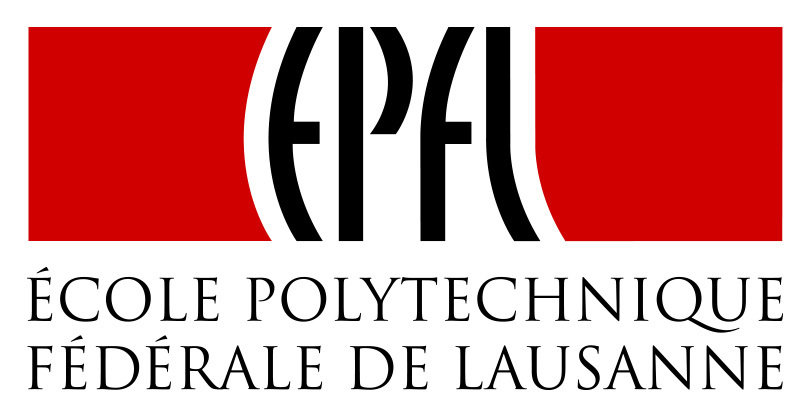

Static Analysis
- Analysing the program without executing it
Why do you need it?
To find *hidden* bugswhich might get revealed only after months into production
Dev tools ftw
Motivation
Consider an example:
Side channel attacks

Image credits: https://www.tau.ac.il/~tromer/acoustic/img/nobody-listens3.jpg
A timing attack watches data movement into and out of the CPU or memory on the hardware running the cryptosystem or algorithm.
Motivation
- Embedded systems - One wants to use hardware that is just good enough to accomplish a task in order to produce a large number of units at lowest possible cost.
- Hard real-time systems - One needs to guarantee specific worst-case running times to ensure the safety of the system. [1]
[1]: Multivariate amortized resource analysis, ACM TOPLAS 2012
Introduction
We propose a system for specifying and verifying resource bounds
- For functional programs that use recursive data-structures
- Meant for verifying precise bounds
Specifying Resource Bounds
Natural to specify as templates : expressions with numerical holes
traverse(t: Tree): Int = {
…
} ensuring(time <= a*size(t)+b &&
parallel-time <= a*height(t)+b)
- a and b are numerical holes
- size and height are recursive functions
Resource Verification Problem
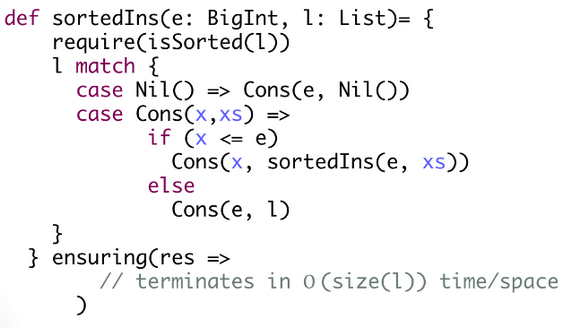
Specifying Resource Bounds
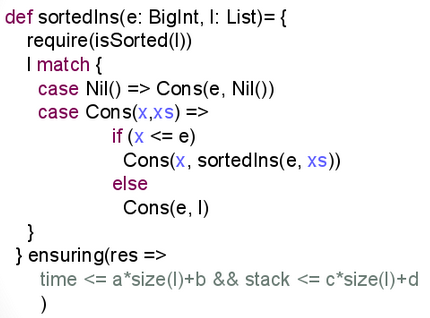
The Problem
- The values yield a valid bound for the resource
- The bound is as strong as possible for the given template
Infer values for the numerical holes such that
Our Tool
Orb
Big O
resource
bounds
Contributions
- Recursive functions
- Algebraic data-types
- Nonlinearity
A system for solving resource bound templates
Implementation and application to sequential and parallel execution time bounds
An algorithm for solving ∃∀ formulas with
Crux is the instrumentation
traverse(t: Tree): Int = {
body
} ensuring(time <= a*size(t)+b)
traverse(t: Tree): (Int, Int) = {
(body, resource-usage)
} ensuring(res._2 <=a*size(t)+b)
Instrumentation
Verification Condition (VC) Generation
f(x) = {
require(pre)
body
} ensuring(post)
∀x. ϕpre ∧ ϕbody ⟹ ϕpost
VCs with free variables
traverse(t: Tree) = {
…
} ensuring(res._2 <= a*size(t)+b))
Postconditions contain numerical holes
They become free variables in the VCs
Goal: Solve for free variables in VCs
Orb algorithm
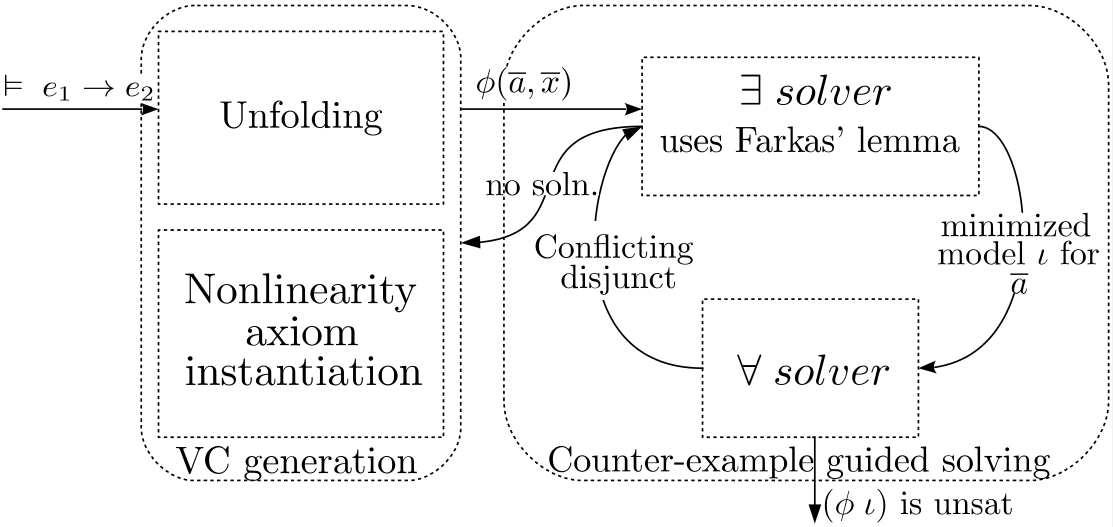
[R. Madhavan & V. Kuncak, CAV ’14]
Bounds Inferred by the Tool
| Benchmark | Bound inferred |
|---|---|
| AVL tree | 145*height(t) + 19 |
| Red-Black tree | 178*blackHeight(t) + 96 |
| Binomial heap - deleteMin | 70*treenum(h1) + 31*minchildren(h2) + 22 |
| Leftist heap - merge | 22*rheight(h1) + 22*rheight(h2) + 1 |
| Insertion sort | 8 * size(l) * size(l) + 2 |
Wall clock time vs. steps
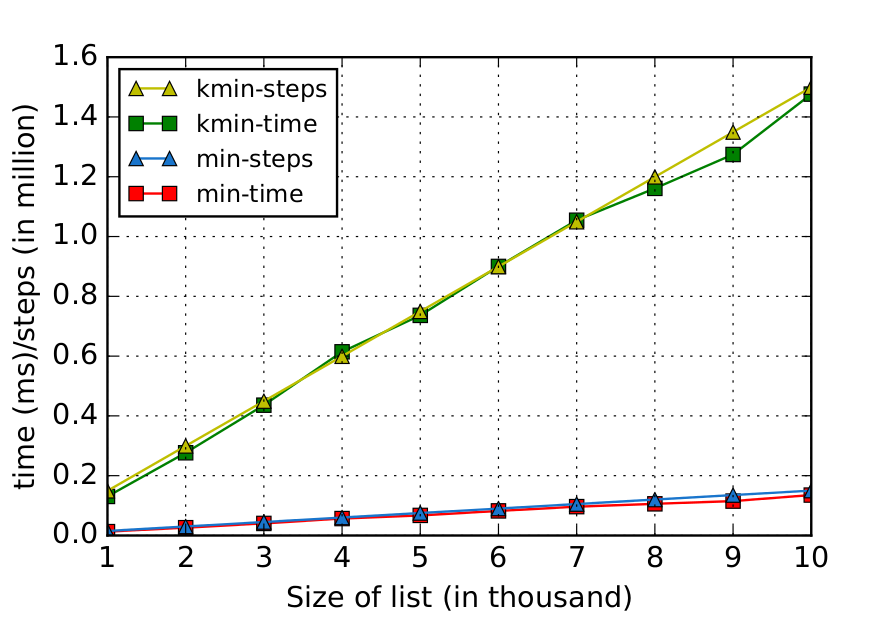
Lazy evaluation and memoization
The problem...


The problem...

The model
Representing Suspensions as ADTs: For every type () => B in the source program we create an ADT denoted LazyB. For functions f1, f2.. that return B, constructors C1, C2.. are added
Cache encoding. We instrument the expressions of the source
program to explicitly track the changes to the cache as the pro-
gram undergoes evaluation.
Experimental evaluation
- Compared the Orb obtained results with instrumented code.
- Reasons of inaccuracy :
- Forcing to a template.
- Inaccuracy due to the tool.

Runtime Vs. Static estimates
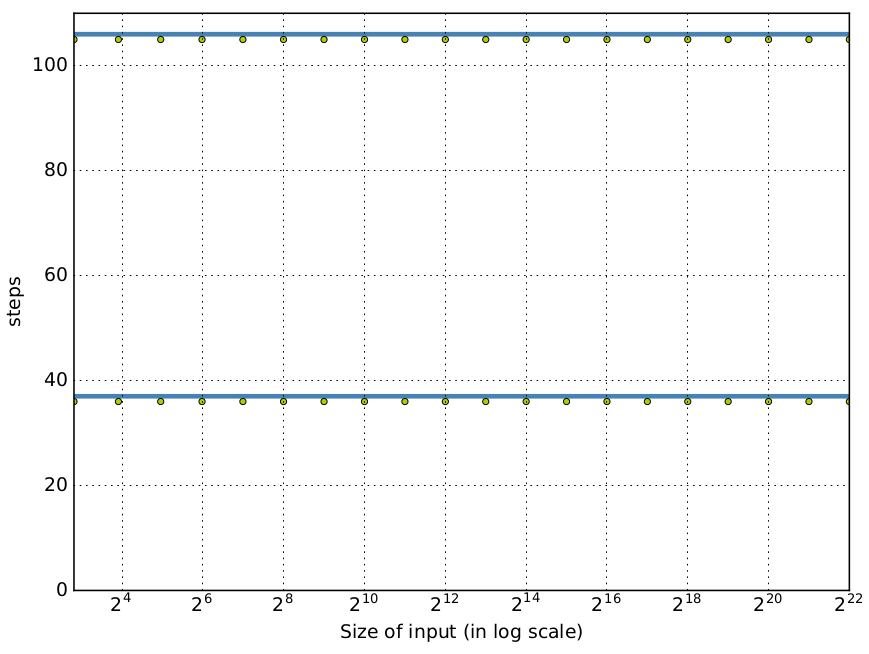
lazy numerical rep.
real time queue
Runtime Vs. Static estimates
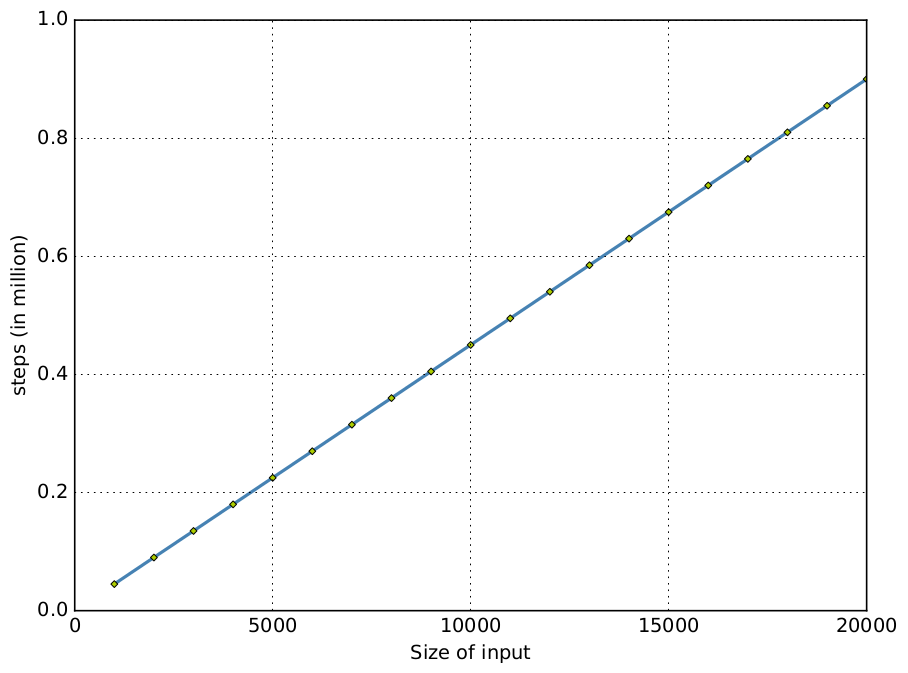
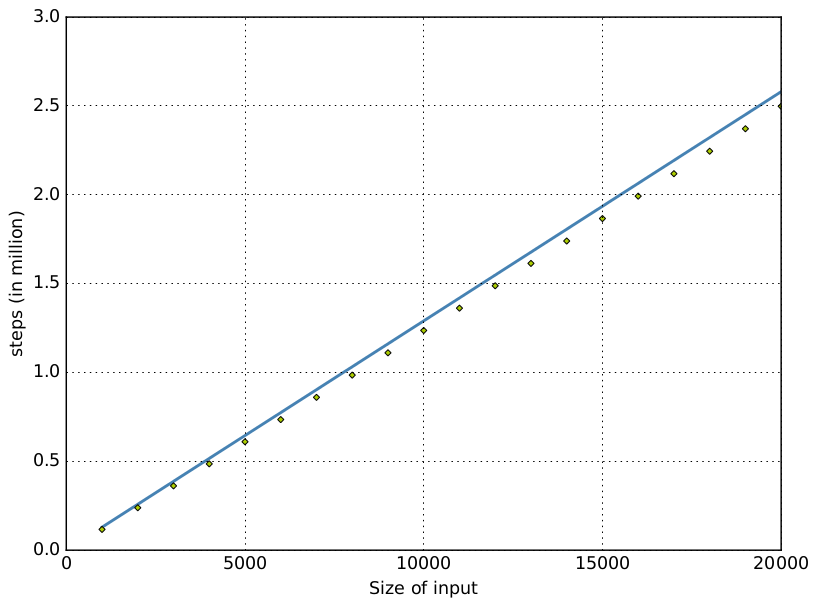
Cyclic Fibonacci Stream
Cyclic Hamming Stream
Runtime Vs. Static estimates
Levenshtein Distance
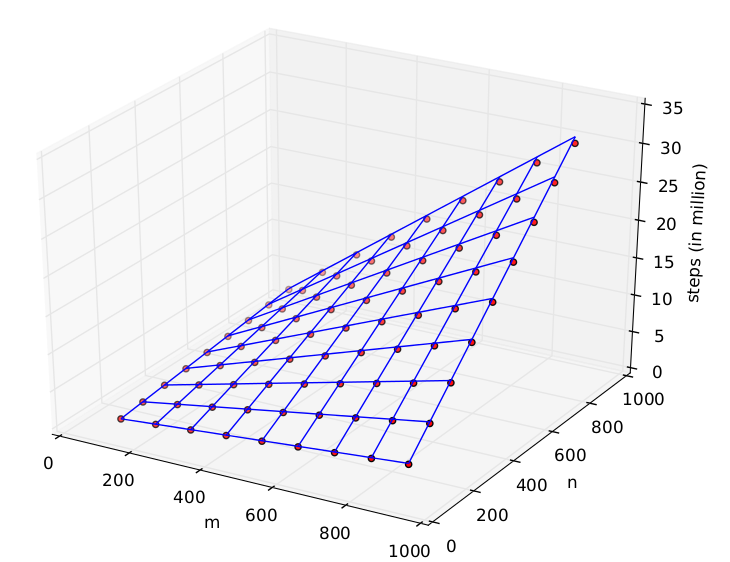
Runtime Vs. Static estimates
Lazy Bottom-up merge sort - O(k*log(l.size) + l.size)
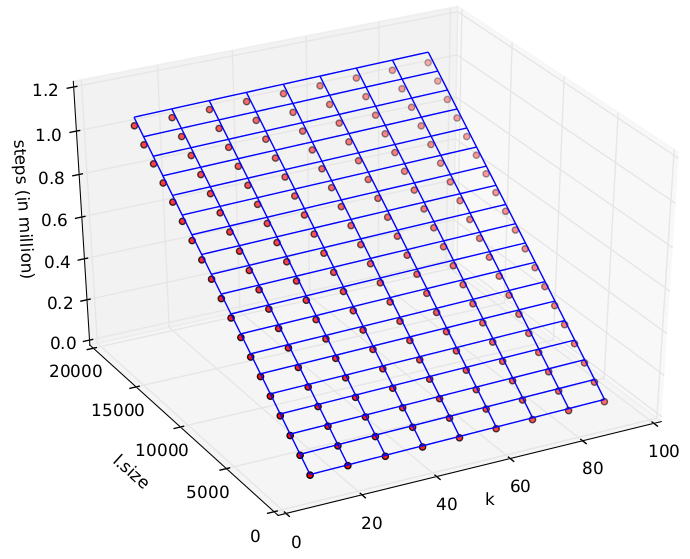
Template Minimization
Orb infereed formula: 129*n + 4
Least value of coeff 0 is 4.
The formula that goes through is 129*n + 4.
Counter-example for 129*n + 3 is at the point 0
Least value of coeff 1 is 124.
The formula that goes through is 124*n + 4.
Counter-example for 123*n + 4 is at the point 8000
Minimization report ends here
Report for Cyclic Fibs.
Formula :- a*x + b
subject to a set of inputs
1. a*x + c
2. d*x + b
Compare 1. and 2. with dynamic count.
Bar graph highlighting % accuracy
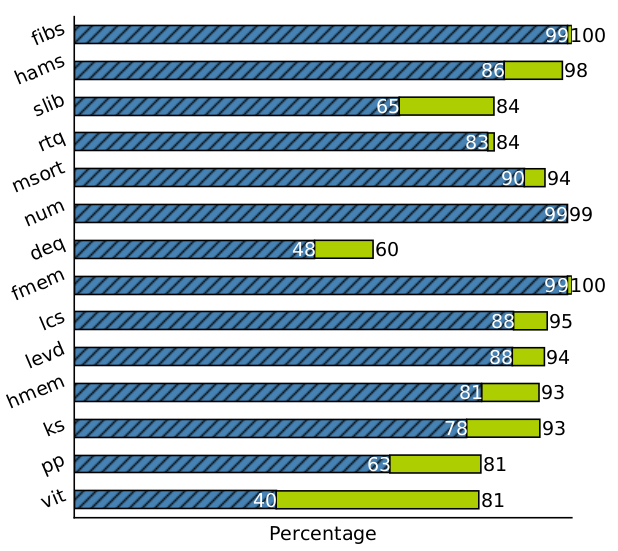
Why the inaccuracy?

The intermediate functions are indeed accurate
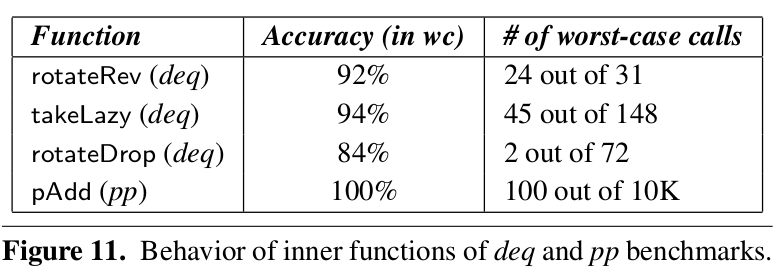
More in the paper
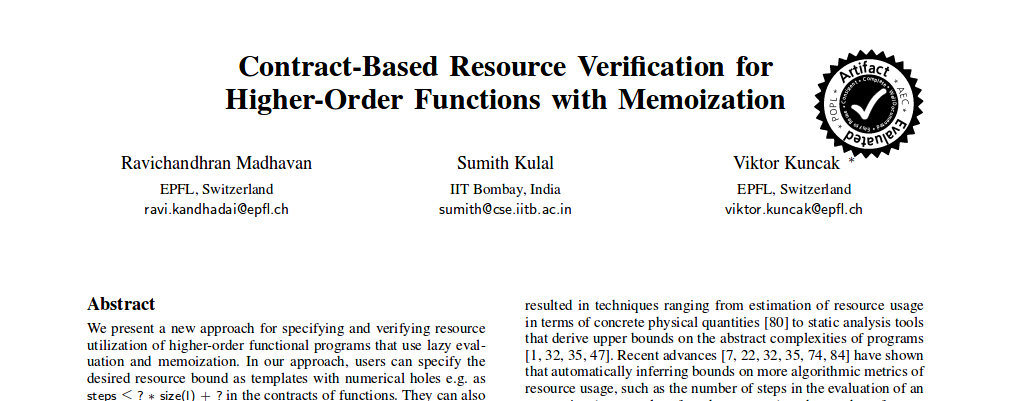
Conclusions and related works.
- Lazy evaluation and memoization successfully modelled with good results on real life case studies.
- Related works:
Towards Automatic Resource Bound Analysis for OCaml.
Jan Hoffmann, Ankush Das, and Shu-Chun Weng.
Type-based allocation analysis for co-recursion in lazy functional languages. Vasconcelos, Pedro Baltazar; Jost, Steffen; Florido, Mario; Hammond, Kevin.
Analysing the Complexity of Functional Programs: Higher-Order Meets First-Order. Martin Avanzini, Ugo Dal Lago, Georg Moser
Hope you enjoyed!
Thank you and get in touch :)
"Essentially, all models are wrong, but some are useful."
- George E. P. Box
Catch me at